- About Us
- Bearings
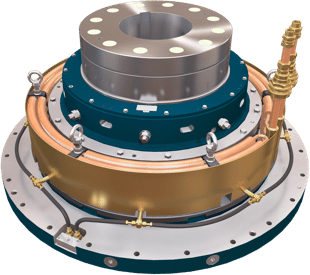 Vertical Bearings
Vertical Bearings
- AV Series
AV
LV SeriesLV
MV SeriesMV
V SeriesV
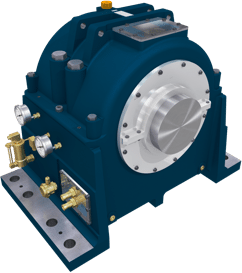 Horizontal Bearings
Horizontal Bearings
- HD Series
HD
IH SeriesIH
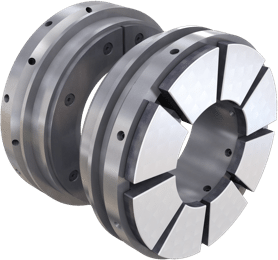 Tilting Pad Bearings
Tilting Pad Bearings
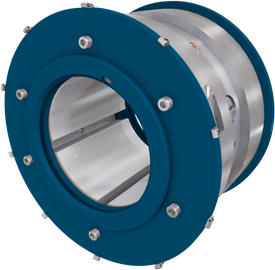 Journal Bearings
Journal Bearings
- Journal Pad Units
Journal
 Thrust Bearings
Thrust Bearings
- SE Series
SE
Omega EqualisedOmega
OmegaOmega
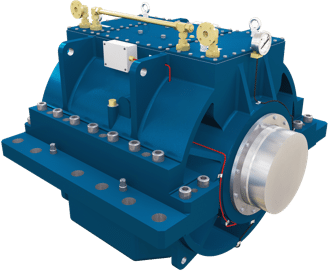 Marine Bearings
Marine Bearings
- Marine Gearbox Internals
Marine
Marine Propulsion Motor
and Generator BearingsEnter your email to download the full paper
"*" indicates required fields
Outline
Home > Energy Cost Reduction in Tilting Pad Thrust BearingsEnergy Cost Reduction in Tilting Pad Thrust Bearings
J E L Simmons, Heriot-Watt University, UK and S D Advani, Michell Bearings, UK
Hydrodynamic, tilting pad thrust bearings are used in many industrial applications. In every case energy is absorbed by the bearing and dissipated in the form of heat. The purpose of this paper is to explore the energy consumption of thrust bearings for high speed applications under different conditions. It is demonstrated that a reduction in the rate at which oil is supplied can lead to significant lowering of the energy loss incurred by the bearing at no risk to its safety. Comparative experiments are reported involving offset pivot thrust pads, subject to forward and reverse rotation of the thrust collar and centre pivot thrust pads. It is found that these changes in thrust pad pivot position do not affect the energy consumed by the bearing.
Introduction
Oil lubricated hydrodynamic thrust bearings rely on plentiful supply of lubricant being drawn into a convergent space thus generating a load carrying film. In many cases the supply of lubricant is guaranteed by arranging for the working faces of the bearing to be immersed in oil. This arrangement, often referred to as “flooded” lubrication, whilst very satisfactory for lower speeds, is much less suitable for high speed use since it leads to prohibitively large amounts of energy being absorbed by the bearings. Energy consumption derives from two sources; necessary frictional losses caused by shearing in the lubricating film and parasitic losses due to churning of the rim of the thrust bearing collar in the surrounding oil. The effect of churning is not significant at low speeds, but at higher speeds typically above 40 m/s at the mean pitch diameter of the bearing, the associated energy losses increase rapidly to equal or event exceed frictional losses.
Two fundamental approaches have been devised to overcome the problem of parasitic losses and enable high speed bearings to operate successfully with acceptable power loss figures. The first method, referred to in this paper as ‘shrouded’ lubrication, requires that the thrust collar rim be surrounded by a shroud or baffles. The presence of restriction at the collar rim substantially reduces the amount of possible churning. The second basic approach, known as ‘low loss’ or ‘directed’ lubrication, is a very simple one in which the rim of the collar runs free of oil and churning losses are virtually eliminated.
There have been a number of published reports in which the two design philosophies are describes (1, 2, 3, 4, 5). Energy consumption in a bearing is manifested principally by the temperature rise between supply and drain of the oil which passes through the system. The ability of energy efficent design to limit this increase when compared with conventional, flooded lubrication has been well established by previous investigations.
The main conclusion of a recently published report (6) on a direct comparision between the two design philosophies was that the low loss approach was the more energy efficent by about 25 per cent when operating conditions were the same for both configurations. Because the principle of the low loss bearing is a very simple one, it was suggested in the same report that bearings of this sort are the most cost-effective arranagement currently available for high speed, energy efficent thrust.
This paper reports the results of some further experiements with an example low loss bearing which have been carried out to determine the beneficial effects in energy terms of changing its operating conditions. In particular the bearing was operated with substantially reduced oil flow and with offset pivot and with centre pivot thrust pads.
ACCESS FULL PAPERRecommended articles
PTFE Faced Bearings for Marine Propulsion Applications
PTFE Faced Thrust Bearings: State of the Art Review and Hydro-generator Applications in the UK
PTFE Thrust Bearings for Hydro Generators and Their Application to Dinorwig & Ffestiniog Pumped Storage Power Plants
PTFE Faced Thrust Bearings – An OEM’s Viewpoint
Michell Bearings
Waldridge Way,
Simonside East Industrial Park,
South Shields,
NE34 9PZ.Tel: +44 (0) 191 273 0291
Email: sales@michellbearings.com
Email: hrteam@britishengines.com
Email: recruitment@britishengines.com© Michell Bearings.
Registered Office Address: 11 Glasshouse Street, St Peter's, Newcastle upon Tyne. NE6 1BS. Company registered in England and Wales no. 9390648

 PTFE Bearings
PTFE Bearings